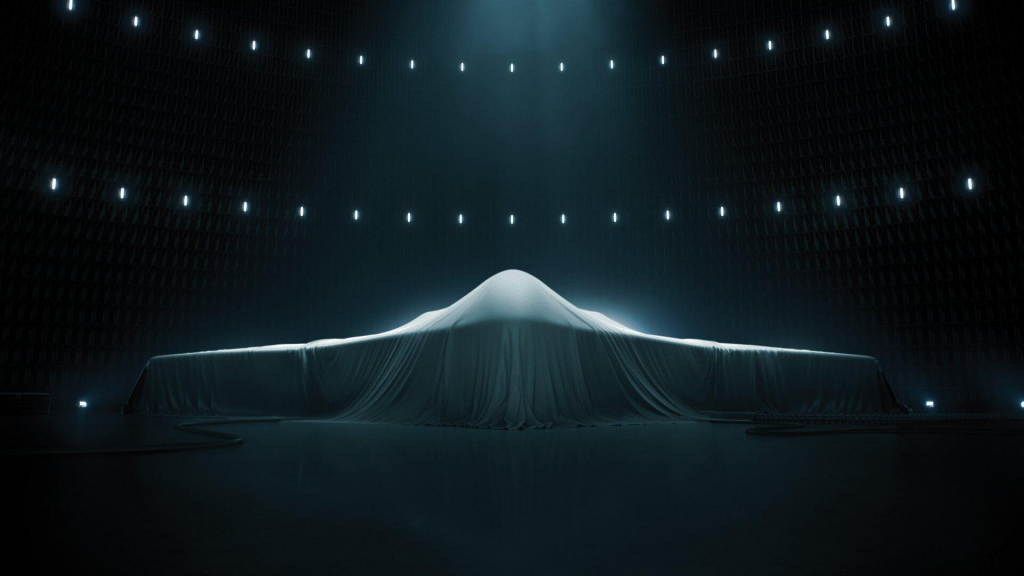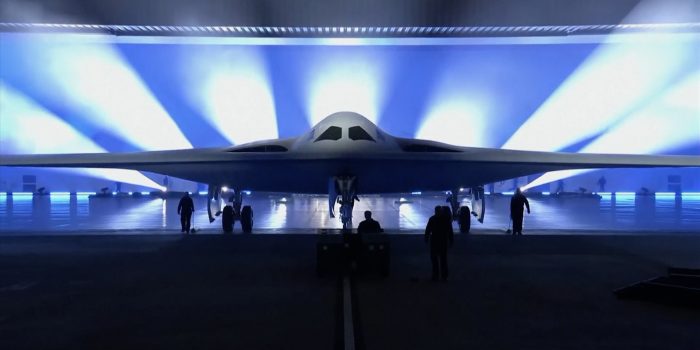For the first time in decades, the U.S Air Force unveiled a new stealth bomber, a sleek, highly powerful weapon that the service thinks would be so lethal that leaders in China or Russia will reconsider war.
The Northrop Grumman-built B-21 Raider was introduced to the public on December 2 at Air Force Plant 42 in Palmdale, California, in a ceremony attended by key defense officials, Northrop Grumman CEO Kathy Warden, and a tribute to the historic Doolittle Raiders, after whom the bomber is named.
“The audacity of the Doolittle Raiders has inspired generations of American aviators,” Defense Secretary Lloyd Austin said at the ceremony as the imposing aircraft loomed behind him. “It’s fitting that the next chapter in American airpower is named in their honor.”

“Ladies and gentlemen, this is deterrence the American way,” Austin said.
The B-21 Raider is named after the World War II Doolittle Raids, in which 80 troops headed by Lt. Col. James “Jimmy” Doolittle and 16 B-25 Mitchell medium bombers embarked on a mission that altered the course of the war.
The B-21 is a long-range, extremely survivable stealth bomber capable of delivering a mix of conventional and nuclear weapons, according to design specifications. The aircraft will be critical in advancing national security objectives and guaranteeing US allies and partners worldwide.
Senior defense authorities remark that the B-21 and its capabilities are clearly needed, as evidenced by the National Defense Strategy and other evaluations.
“The B-21 Raider is the first strategic bomber in more than three decades,” Austin said during the unveiling ceremony.
“It is a testament to America’s enduring advantages in ingenuity and innovation. And it’s proof of the Department’s long-term commitment to building advanced capabilities that will fortify America’s ability to deter aggression, today and into the future.”

The aircraft is designed with updated stealth qualities and mission flexibility, which senior leaders in the Air Force and across the Department of Defense say are required to achieve the United States’ goal of achieving integrated deterrence, as well as the capabilities needed to successfully respond to aggression anywhere in the world at any time.
While the time frame of the B-21’s entry into service is unknown, basing choices have been made. Ellsworth AFB in South Dakota will be the B-21’s first Main Operating Base and formal training unit. The preferred options for the remaining home bases are Whiteman AFB in Missouri and Dyess AFB in Texas. Aircraft will be delivered to each when they become available.
In addition to developing a bomber with cutting-edge technology and capabilities, Air Force officials stressed the importance of cost containment while allowing maximum flexibility. The B-21, for example, is designed with an open systems architecture that will allow for rapid future capability integration to stay up with the hotly disputed threat environment.
The B-21 presented on December 2 is one of six in production. Each is a test aircraft, but they are manufactured on the same production line, with the same tools, techniques, and technicians as production aircraft. This technique has allowed production engineers and technicians to capture lessons gained and directly apply them to subsequent aircraft, emphasizing the importance of repeatability, producibility, and quality.

The B-21 design is based on firm specifications and existing and mature technology to control program costs.
In addition, Northrop Grumman, the plane’s prime contractor, has been instructed to adopt manufacturing techniques, production tooling, and a productive workforce that enables continuous and seamless production while eliminating unnecessary costs.
“Leveraging innovative manufacturing techniques, open systems architectures, and active management allows us to integrate new technology as it matures and ensures the B-21 can adapt to future threats and be successful when and where we need it,” Assistant Secretary of the Air Force for Acquisition, Technology, and Logistics Andrew P. Hunter, said.
The launch of the B-21 comes at a time when Russia is aiming to seize Ukraine, China’s attitude toward Taiwan is causing alarm, and the US military wants a high-profile demonstration to send a clear message to America’s enemies.
And, if a war with China breaks out, the US’ recent military developments, particularly its air defenses, will necessitate it to fly undetected inside enemy territory. The Air Force thinks that the increased stealth capabilities of the B-21 will allow it to conduct such penetrating strike missions.


